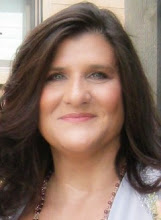Memories can add poignancy, reveal clues, and give insight into character behavior. A character may have a flash of memory every now and again.The key is to keep them short and simple, a sentence or two, perhaps a paragraph, and make them relevant.
It helps to trigger memories with something the character sees, smells, touches, or tastes. It can be a person, place, or thing. Songs stick with us and can bring up a feeling or a forgotten person. Smells can take you back to a place and time and the person it reminds you of.
Every time Dick sees the ocean on television, he may smell saltwater.
Every time Jane smells fresh baked cookies, it may remind her of the grandmother she adored.
Every time Sally hears a train, it may remind her of her sad childhood.
The neural connection is hard-wired. The response is involuntary.
Use memories as a visceral beat.
Dick frowned at the impossibly blue sky, perfect sand, and white-edged waves on the travel poster that read: "Beaches are for Lovers." He pictured Sally on the beach in Puerta Vallarta, all tanned and flirty in a bitty bikini. The hot sun and tropical breeze had lulled him into a stupor of tequila and hotel sex. Then Sally smiled, cruel as a shark, and tossed him aside, bashing him onto razor sharp coral, not caring if he drowned. Beaches were for suckers.
You could extend it with a little more detail about what went wrong (if this is the correct time and place to do so). Memories are good triggers to put the character in a specific frame of mind to set them up for the next encounter.
If Dick sees Sally again, the game is on. If she wants to woo him back, it would be wise to avoid the beach. If they meet on a beach, the conversation is likely to turn heated.
A flashback is a transition in time and is triggered with thoughts or interior dialogue. It should be pertinent to the current story. It can reveal information, put a new twist on old information, explain the missing piece of a puzzle, or motivate a character to behave differently than expected.
If Dick sees Sally again, the game is on. If she wants to woo him back, it would be wise to avoid the beach. If they meet on a beach, the conversation is likely to turn heated.
A flashback is a transition in time and is triggered with thoughts or interior dialogue. It should be pertinent to the current story. It can reveal information, put a new twist on old information, explain the missing piece of a puzzle, or motivate a character to behave differently than expected.
If you must use a flashback, incorporate it into the action. Keep it short and resume real time as soon as possible. A few paragraphs work better than a few pages. Begin the flashback with a single-phrase transition, but avoid telling.
Dick arrived at the train platform amid the pacing commuters focused on their telephones. Across the tracks stretched a panoramic view of a pristine beach with tanned white people on red Adirondak chairs. The last time he had been on a beach was during an op. No pretty people. No chairs. Just the hum of choppers and the snap of chutes as they landed.
The scene continues, relating his experience during the op that went wrong.
Flashbacks can create speed bumps and should be used sparingly and only when the information cannot be slipped in another way. To format, you can switch from past tense to the past perfect tense for a sentence or two before reverting to the past tense again within the flashback.
End the flashback with another, short transition phrase to orient the reader to real time. You can use another sensory cue to bring them back to the present: a doorbell, a voice, a dog barking. Be subtle.
The train screeched to a halt, exhaling a horde that jostled him like so much flotsam. No more beaches. No more ops. That was all behind him now.
Of course, it won't be. Dick will be called in to do that one last "job."
If a look at the past is related as a full scene, it should contain action and dialogue, an obstacle and a solution. It should not be a narrative dump.
Memories and flashbacks are not the same thing as a past story woven into a current story. That is a structure choice best handled by alternating chapters. Triggering and releasing the past story is still an important component to keep the reader oriented to the time and place when weaving the threads together.
 |
Diana Hurwitz is the author of Story Building Blocks: The Four Layers of Conflict, Story Building Blocks II: Crafting Believable Conflict, Story Building Blocks III: The Revision Layers, and the YA adventure series Mythikas Island. Her weekly blog, Game On: Crafting Believable Conflict explores how characters behave and misbehave. Visit DianaHurwitz.com for more information and free writing tools. You can follow her on Facebook and Twitter. |



Love using this technique on occasion for character and plot development. It's amazing how a few revealing paragraphs add scope and dimension to a story. Great post, Diana.
ReplyDeleteHey, I'm child of the 60's ... let me tell you about flashbacks!
ReplyDeleteTerrific post, Diana. I especially liked the examples. They really showed how to implement your tips. Another thing I learned about flashbacks - in addition to keeping them short - was to make sure what happens in the flashback is integral to the story in some way, not just something the author wants to show.
ReplyDeletePerfect for throwback Thursday! #TBT
ReplyDeleteExcellent post, Diana!
ReplyDelete